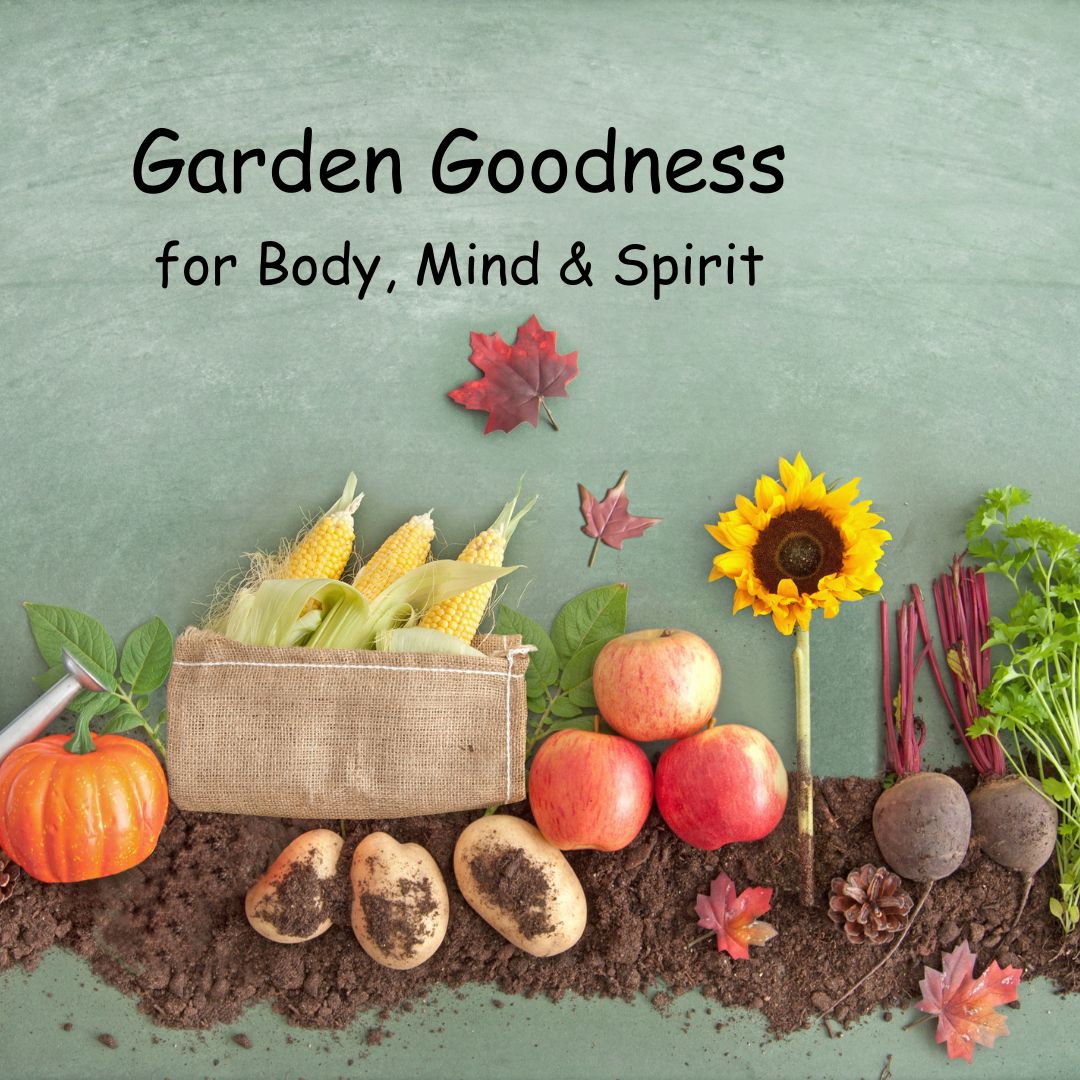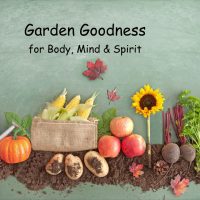
There are four of us growing vegetables at Westwood this year: myself, Dawn H, Margret S. & our friend & neighbour Shana C. Christine is helping with advice, information and the watering. My technique many years ago was for the plants to be close together to retain moisture & prevent weeds. I also turned the soil every fall to prevent compaction. Now I’m into no-dig gardening where a layer of compost is added every year & the soil is disturbed as little as possible. The science tells me it is a much better method for the soil & plants & is a lot less work. In the pic there is a bare spot at the bottom. There were small birds eating the beet tops, which is why they are covered, and I suspect that they ate the bean sprouts in that area too.
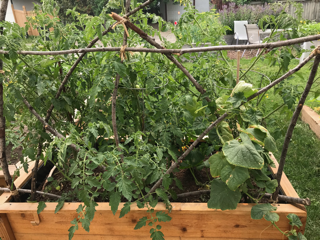
Dawn is growing cucumbers on a trellis, which I’ve never seen before.
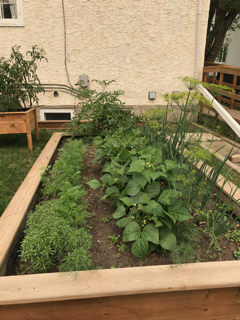
Margret is into Hugelling (pronounced hoogleing) or Hügelkultur that looks really interesting too. Check out the video below for more information about this method.

Shana does 3 sisters gardening. She plants corn, then beans to climb up the stalks & squash underneath to cover the soil. I’m amazed at how it works together. I think she has some soil amendments that make her plants grow better (have you seen how tall her corn its already) so I’m going to quiz her on that the next time we meet up.
If you have been to the back yard in the last few years you may have seen some funny looking plants with bulbs on the top of stalks. They are walking onions. Christine Watts got them from her father brought them to Westwood. The whole plant is edible & tastes like a zesty scallion. Check out this website: https://www.egyptianwalkingonion.com/ and take a few for your own garden if you like. There is even a recipe for pickling the little bulbs on the top.
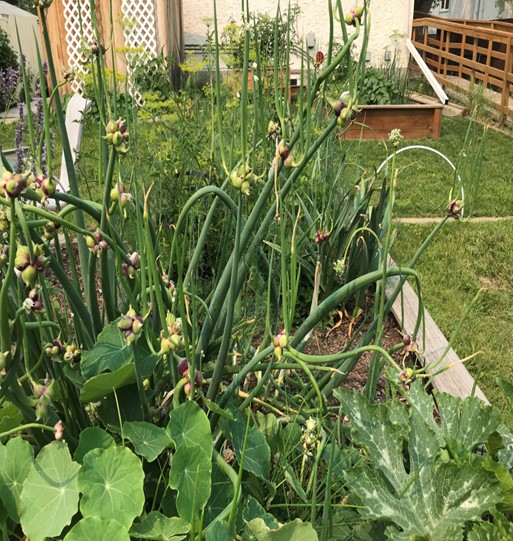
There is a lot of Anise Hyssop in the back garden too. It is the large swath of purple flowers with bees all around it. It is a native perennial plant that has a lot of uses in the kitchen & as medicine. The flowers taste like licorice & the leaves make a great tea: information & recipes. I’m sure no one would mind if you took a few stalks for you kitchen or even a plant for your garden.
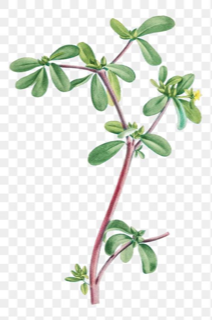
Another edible plant ‘volunteering’ in our gardens (and sidewalk cracks & the boulevard) is purslane or Portulaca oleracea. I was introduced to it by Westwood members Joyce & Christine. It works well in soups and salads and is often referred to as a superfood. I prefer to harvest it in the evening as the taste is milder. It is a bit of a pain to clean because of all the little spaces dirt can hide. It is worth it though. A couple of sites with info & recipes are The Almanac and eat your weeds courtesy of Salisbury Greenhouse. Incidentally, it on Alberta’s noxious weed list.
Lindsay McWhirter: Garden Blog Author
